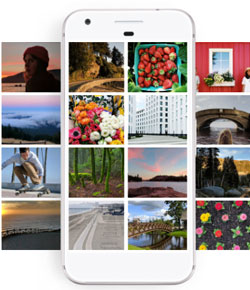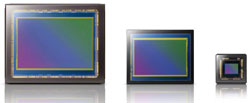While Apple continues on as the premium brand in the smartphone market, it appears its technological advantage is slipping, especially when it comes to photography.

The latest Apple phone has slipped to number 10 on the DxoMark hit parade of camera-embedded mobile phones, with no less than six other makers besting the its iPhone 7.
The HTC 10, Samsung S7, Sony Xperia X Perf, Huwei 10, Moto Z Force Droid, Samsung S6 (a 2015 model), Sony Xperia XZ and Sony Xperia Z5 all come in with (slightly) higher ratings.
The surprising leader of the pack is the first smartphone from Google, the Pixel, released back in October last year. Rumours abound that the next Pixel camera is imminent.
‘With an overall DxOMark Mobile score of 89, pixel, the latest Google smartphone, is the highest-rated smartphone camera we have ever tested,’ the review summary stated. ‘Its image quality scores are impressive across the board, but it is particularly strong in providing a very high level of detail from its 12.3MP camera, with relatively low levels of noise for every tested lighting condition. It also provides accurate exposures with very good contrast and white balance, as well as fast autofocus.’

The Google Pixel and larger screened Pixel Plus use the latest Sony digital sensor technology, the 1/ 2.3-inch stacked BSI CMOS Sony IMX378 sensor. Sony sensors are also used in the iPhone 7 and Galaxy S7 – but smaller in size. The IMX378 has larger pixels than sensors used in most other smartphones and being part of the Exmor RS family, is related to the sensor used in Sony’s full-frame Alpha cameras and the RX range of high end compacts.
This is combined with what Google calls HDR+, which captures and combines several RAW images to create one enhanced JPEG image with lower noise and extended dynamic range.
Smartphone photography is also being helped along by stunning screen displays which leave conventional cameras way behind. The wide colour gamut and resolution of smartphone screens (the latest range from 400 to above 500ppi) present photographs and video in the best possible light (excuse pun). Frankly, hard copy prints need to come closer in both resolution and colour gamut if they are to have any appeal to smartphone photographers.
Tech website wired.com states: ‘The Pixel offers compelling evidence that phones haven’t just replaced point-and-shoot cameras. They’ve perfected the concept. Smartphone cameras are smarter, faster, and they’re always in your pocket. Even better, they can improve your shots even after you’ve taken them.’





Be First to Comment